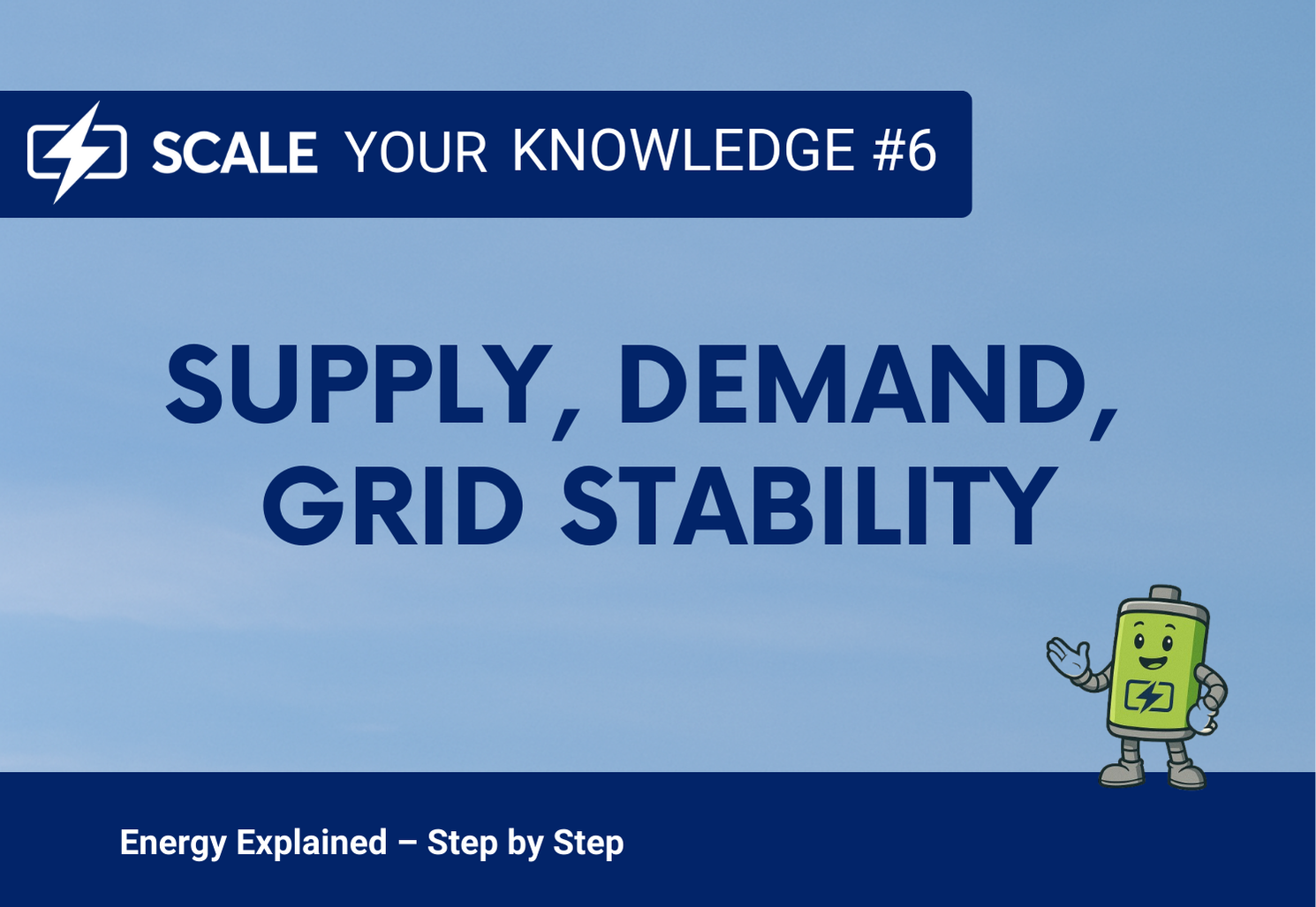News
Scale Your Knowledge #6 – Supply, Demand and Grid Stability: Why 50 Hertz Matters

One of the biggest differences between electricity and other goods is this: electricity cannot be stored indefinitely. That means supply and demand in the power grid must always be balanced at every single moment.
Supply and Demand in the Grid
Renewable energies like solar and wind feed electricity into the grid depending on the weather. At midday, when the sun is strong, solar panels generate large amounts of power – often more than is consumed at that time. In the evening, demand typically rises while solar production falls. This imbalance creates challenges for the stability of the system.
Why Grid Stability is Critical
The European power grid operates at a frequency of 50 hertz. This frequency remains stable only if generation and consumption are perfectly matched. If too much electricity is fed in, the frequency rises. If too little is available, the frequency falls. Even small deviations can destabilize the system and, in extreme cases, cause outages.
The Role of Storage and Flexibility
To keep supply and demand in balance, flexible solutions are needed. Battery storage systems can absorb temporary surpluses and release power when needed. Demand-side management also plays a vital role: consumers such as industrial plants or heat pumps can shift their electricity use to times when renewable production is high, helping to balance the system.
Why This Matters
As the share of renewable energy continues to rise, keeping the system in balance becomes increasingly complex. In an energy system built on sun and wind, new tools are needed – from storage solutions to smart grids and digitally managed consumption.
Battery Energy Storage Systems (BESS) play a key role here: they can absorb excess solar and wind power when generation is high and release it back into the grid when demand peaks or the sun isn’t shining and the wind isn’t blowing. In addition, BESS contribute to grid stability by providing frequency regulation and help to avoid costly curtailments of renewable energy. In short, they act as a flexible buffer that ensures renewable electricity can be used more reliably and efficiently.
A reliable electricity supply is about more than just generation. What really matters is that supply and demand are in balance at every moment. Only then does the grid frequency remain stable – and only then is our electricity supply secure.





